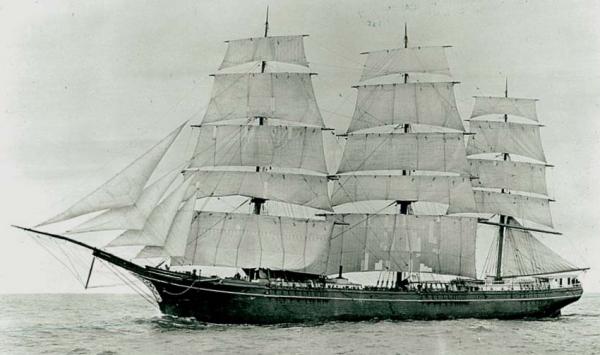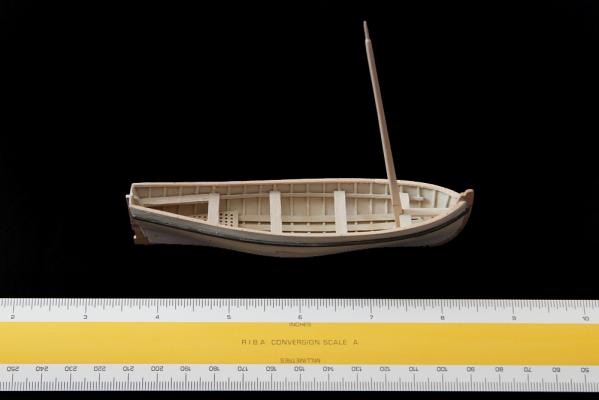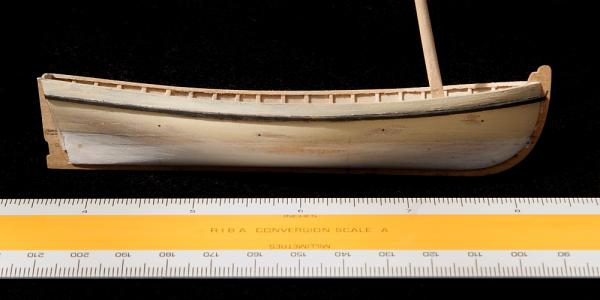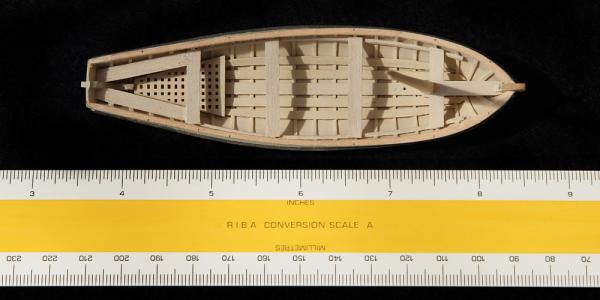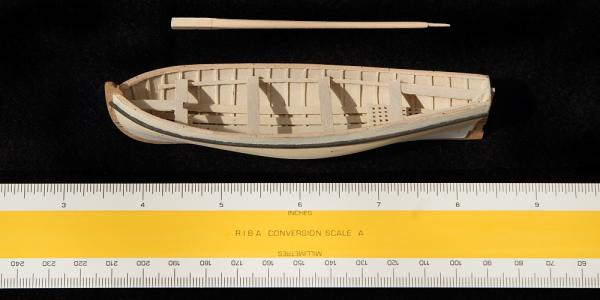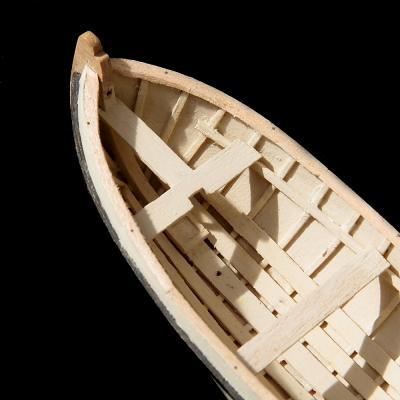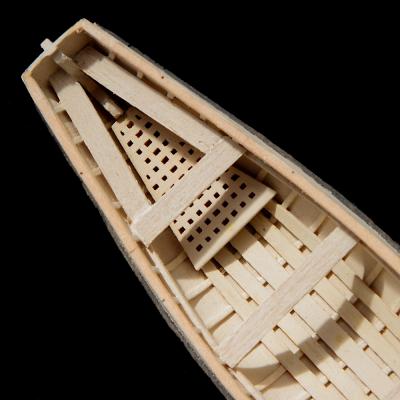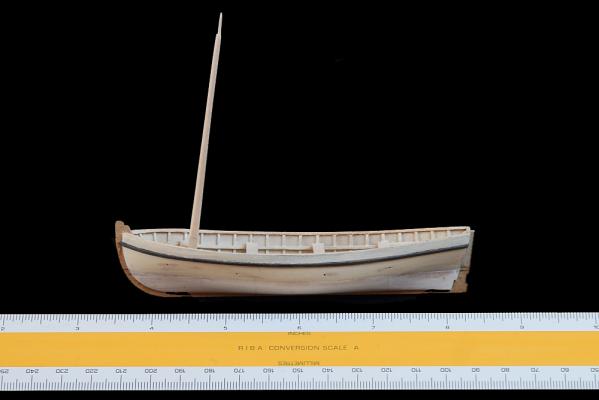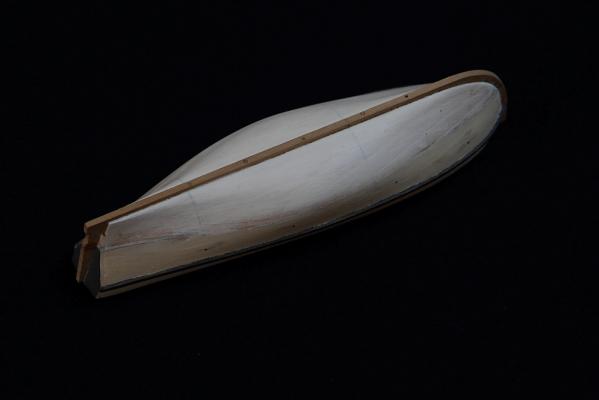-
Posts
111 -
Joined
-
Last visited
Content Type
Profiles
Forums
Gallery
Events
Everything posted by Torrens
-
Hello Kester I know the Pommern well! When I was at the Arts University, Bournemouth, I was also a visiting lecturer at the Malardalens Hogskolan in Eskilstuna. With my colleague in Eskilstuna we designed a project for and about the Pommern. This project, completed by a number of British and Swedish students, comprised a number of large scale full colour illustrations of the ship. The originals of the British illustrations were presented to the ship in the early 1990s. I don't know whether they are still on display. Some were also printed, for sale to visitors to the ship. Because of this project I spent many very happy days in the very beautiful Aland Islands, and in the maritime museum in Mariehamn - still my favourite maritime museum because of its close association with Erikson's vessels! Obviously the reason for these visits was to conduct research. We - myself and the British and Swedish students - were always made very welcome. Once the project was completed the ship and the museum organised a reception and presentation on the main deck of the Pommern. There were about 50 people attending, from Britain, Sweden and the Alands, and we all enjoyed a very traditional Swedish mid summer's meal! It was a memorable occasion! I was allowed to climb the foremast, but unfortunately I could not get higher than the fore main top (my knees wouldn't stop shaking!). I climbed with two of my students, under the guidance of the ship's keeper. One of my students got as high as the fore upper topgallant yard and was quite happy sitting astride the yard with his video camera! I also know the Viking in Gothenburg! I've had a couple of tasty - but very expensive - dinners on board! I understand that preserving these ships is extremely expensive, but it is disappointing that the Viking has not been completely re-rigged. My work at the Arts University, Bournemouth, also included an extensive and in-depth project on the Vasa. My very first visit to Stockholm was on a Sunday and I was determined to visit the outstanding Vasa museum, but didn't know what time it opened or exactly where it was (I only had a vague idea). I eventually came across two policemen in their patrol car. I asked them for directions and which bus to get. They told me and then drove off. About 15 minutes later they came back and told me the museum wasn't open until about 11 so would I like to get into the patrol car and they'd give me a tour of Stockholm! After the tour, and in time for the opening of the museum, they dropped me off at the front door! The Vasa project also involved the design, preparation and completion of a number of large scale, full-colour illustrations, which I understand are still on display alongside the ship (I haven't been back to Stockholm since 1998). Completing the research for this project gave me and my students unique access to every part of the Vasa. It was a fascinating experience - carried out over a number of years. Sorry this is so long! Best wishes.
-
Nils I've sent you a PM! The Society for Nautical Research (SNR) does not have a dedicated archive. All material is written by members and, if accepted, is published in the Society's quarterly journal The Mariner's Mirror. This means the only way you could check previous articles is through the annual index, but I doubt very much you will find much information on the Elbing, later Heinrich Kayser. Unfortunately, this is basically too modern for the SNR! I would suggest you contact the National maritime Museum, in Greenwich, London. If they don't hold the records of the British Shipping Controller, 1919-1921, then they might be able to advise on who does have these records. Another option would be to try the monthly magazine Sea Breezes. It is still published, but I haven't taken it for some years now so I'm not sure from where it is now published. It used to be from Liverpool. Hope this helps. By the way, lovely model of the Heinrich Kayser! All the best.
-
At the time of writing this post, this book is also available new via Amazon.co.uk, starting at £21.74. As Grant says, it is a seminal work and, at the time of first publication, one of the finest ship model making books to have been written, though it still remains a classic even if books on ship model making have progressed significantly since the mid 1950s. Longridge's model of HMS Victory was donated to The Science Museum, South Kensington, London, with his equally impressive Cutty Sark. I don't know whether they are still on display as it's been some years since I last visited the museum. Sadly, the last time I did see them they were both suffering from damage which looked very much like it was the result of warping, probably because some materials had not seasoned sufficiently at the time of the build. It could also be that Longridge's workshop was prone to damp.
-
Nils: Your Pamir looks full of character! A very impressive model! It would look perfect in my living room! I would definitely be interested in seeing photos of your build. Thank you for the offer - how should we proceed? Via a PM? Which plans did you use? Nils and Kester: the Passat was the first sailing ship I ever saw, in Travemunde, many, many years ago when on a family holiday, and from that moment onwards my interest in the sailing ship has grown into a passion, though some might call it an obsession...! However, my favourite four-masted barque is the Herzogin Cecilie, with the Passat a very close second! My maritime history book collection includes many books published on the last years of merchant sail. These include books published in the Aland Islands, Finland, France, Italy, Norway, Sweden, the USA and obviously from the UK, so whilst I'm not short of suitable reference material a kit would be far more convenient than scratch building, at least for the foreseeable future! My other problem is that I'd also like to build a 40-gun frigate and... Interestingly, when the late Donald McNarry built his first miniature of the Herzogin Cecilie he complained of the monotony of having to build three identical masts with three sets of identical rigging!
-
Beautiful workmanship Michael. Well done. With the obviously highly developed skills you have I was wondering what a cutaway model would look like - what with all that internal joinery work in the cabins, etc, etc...??? Maybe a future project... And a very nice workshop too!
- 2,207 replies
-
Kester and Dave Thank you. I do know of Underhill's plans - I have many of them! - and the books published by Brown, Son & Ferguson in Glasgow (though the quality of their books has gone down-hill in recent years). I suppose you are all correct in that there wouldn't be enough interest, but I watned to 'test the waters' to see what, if any, the reaction might be to such a wish list! The only solution is to scratch build, but a kit would take some of the effort if only because at present my spare time is very limited!
-
Many, many years ago a German company produced a wooden kit of the four-masted barque Pamir. Since that went out of production the only decent kit of a late development merchant sailing ship is Billings Danmark, and this is not exactly an outstanding kit. How many members, like me, would like to see a quality kit of a four-masted barque, period 1890-1914?
-
All's well! It now comes up on the Model Expo site. Thanks guys.
-
Correct! The downeaster A J Fuller, built in Maine in 1881, photographed in Puget Sound, Washington State, USA.
-
Thank you Bill. I'll try the Model Expo site again - it wasn't there the last time I checked!
-
Danny is right: it is definitely not the Cutty Sark!
-
I've been considering Proxxon power tools for modelling for some time now, particularly now that the first two Unimat machines are no longer available. I haven't taken the plunge because I'm still not convinced about their ability to cope with small scale stuff (the smaller the scale or item being turned, the more evident the poor tolerances are, according to some), so I'm interested to see how good this lathe is.
-
I agree; an impressive - and different - approach to plastic kit building!
- 601 replies
-
- constitution
- revell
-
(and 1 more)
Tagged with:
-
-
I haven't seen this kit advertised as available yet? Not even via the usual links for MS kits. I'd appreciate it if someone could let me know where I could get it from. Many thanks in anticipation!
-

Falklands War admiral Sandy Woodward dies aged 81
Torrens replied to Kevin's topic in Nautical/Naval History
Admiral Sir Sandy Woodwward was always positively out-spoken in support of the Royal Navy particularly since he retired in 1989. It was probably this forthright attitude that stopped him from making it into the House of Lords, as his peers did, and as is usually the norm for service personnel who reach his rank and equivalent. Whatever his views, he served his couintry and for this alone he should be acknowledged. -
USAV MG Winfield Scott (LT-805)? The clue helped!
-
Training ship Conway when she was HMS Nile?
-

Acrylic over oil based stain?
Torrens replied to Paddy's topic in Painting, finishing and weathering products and techniques
From my days teaching illustration techniques, I wouldn't risk over-painting an oil-based product with acrylics. I would make sure the oil-based stain is thoroughly dry, sand it, seal it and then over-paint with one of fast drying artist's oil paints. Much would depend on what oil has been used in the stain, something that's not always easy to establish. However, if you do use acrylics, I would apply two or three diluted coats, or more, rather than trying to cover in one single coat (which would make the plastic base of the acrylic potentially unstable over the oil stain). An interesting ancedote regarding acrylics: museums such as the Science Museum, London, used to specify no acrylics to be used on any illustration commission for their national collections as acrylics are, comparatively, too recent a medium for us to know what their long-term properties are. We do not know whether they will stand the test of time in the same way that oils, gouache and watercolours have (though gouache is not a very stable medium at the best of times). -
Could it be HMS Daring? A lthograph by H J Vernon maybe? Or even Dutton? Whatever, it is a beautiful drawing!
-
Detailed and very informative log JSGerson. I shall continue to follow this thread with interest!
- 974 replies
-
- rattlesnake
- mamoli
-
(and 1 more)
Tagged with:
-
Some months ago I started work on the privateer Rattlesnake's longboat as a prelude to making the actual Model Shipways kit of the same name. I followed the instructions but also appiled, where possible, the methods advocated by the late Ewart Freeston in his book Model Open Boats (Conway Maritime Press, 1975). I also consulted W E May's book The Boats of Men-of-War (Chatham Publishing 1999). Progress was relatively swift and the photos below show the stage I reached before realising that not only were the proportions of the longboat inaccurate, but knowing this would irritate for as long as I looked at the model! The plans of the Rattlesnake show a correctly proportioned longboat, but the lifts do not give the same result and there's absolutely nothing that can be done to rectify the errors. The hull is too narrow, particularly towards the stern, and she lacks sufficient body for a longboat. However, I continued... After gluing the lifts together as per the instructions I sanded the hull, inside and out. Not only was this to smooth the lifts into the shape required, but it also allowed me to make the shell as near to scale thickness as my skills allowed. This latter process is not easy using basswood, because of it's nature to fur up. Between sanding sessions, whether by hand or by using an electric burr, I applied copious ammounts of sanding sealer. Once I was satisfied with the hull I then fiited the single piece stem-stermpost-keel. Then it was the fitting out of the inside, starting with the frames, made from sized paper, then adding the riser that supports the thwarts, fitting the bottom boards and stern grating, making and fitting the square mast housing, fitting the thwarts and finally fitting the gunwale. The gunwale was secured using very fine brass wire, just visible in some of the photos below. I also used fine brass wire to fix the riser for the thwarts and to secure the keel to the hull, going right through the central bottom board. The mast was hand carved from square stock. The photos show the longboat treated with a diluted undercoat. One day I might finish it in the 'correct' colours, though much work would needs to be done to remove the evidence of the lifts and to fill the over-scale grain of the thwarts, etc...! For information the model was photographed against a back cloth of black felt. I included a metric and Imperial scale to indicate the size of the model - which is much smaller than the photos might suggest, hence the enlarged grain and seemingly rough edges! Comments welcomed!
-
The Boats of Men-of-War by W E May Published by the National Maritime Museum in conjunction with Chatham Publishing, London 1974 & 1999 Numerous draughts, photographs of original models and reproductions of contemporary paintings, etc. ISBN 1 86176 114 7 There is obviously much interest here in the boats of men-of-war, not the least the logs relating to the building of various kits of long boats, etc, so I thought members might be interested in a review of this book. The late Commander W E May RN (retd) was, through his work at the National Maritime Museum, Greenwich, London, a recognised authority on the subject (though he was, by profession, a navigation specialist). He obviously had unrestricted access to the draught and model collections at the museum, and it is these that underpin this work. This book is probably the only modern study devoted to the subject and as such is an indispensible reference source for historians and model makers alike. The authority of the book lies very much in the numerous reproductions of contemporary draughts, supplemented by models, mainly, if not exclusively, from the collections in the National Maritime Museum. Unfortunately there are no detailed construction drawings, but this is not too much of an issue as this information can be found relatively easily from other sources (see below), if not from the contemporary models themselves. Furthermore, the 1999 edition contains extensive tables which cover the scantlings of all types of boats carried by men-of-war between 1660 and 1800. A later chapter deals with the boats carried in the 19th century. A final chapter deals with the arming of boats. I would suggest that this book, and the 1999 edition in particular, is a prerequisite for anyone building a model from the sailing navy period! Other sources, which include construction details for boats, include the following; The Arming and Fitting of English Ships of War, 1600-1815, by Brian Lavery, London 1987. The Ship of the Line, Volume II: Design, Construction and Fittings, by Brian Lavery, London 1984. The Restoration Warship - The Design, Construction and Career of a Third Rate of Charles II's Navy, by Richard Ensor, London 2009. (I will add to this list when I've more time to go through my own reference sources. In the meantime I hope the above helps.) Addendum: I should have added that the first, 1974 edition of The Boats of Men-of-War was publlshed as a monograph by the National Maritime Museum. As such it lacked many of the draughts and photographs that have been included in the 1999 edition.
-
I have recently taken delivery of the book Legacy of a ship model: examining HMS Princess Royal, 1773, by Rob Napier, published by Seawatch Books, Florence, Oregon, USA. It was first published in 2011. First of all this is an outstanding production! A beautiful book! The publisher's are to be commended on the quality of production. It is landscape format, printed on quality paper and is profusely illustrated with numerous full-colour photographs, very clear line drawings (many multi-coloured), reproductions of contemporary marine paintings and x-rays showing internal fittings, fixtures and construction techniques. In terms of the writing, the author is as competent an author as he is a skilled craftsman; his text, his technical descriptions, are all easy to follow and flow equally as well. In essence this book is a very detailed and comprehensive record of the almost complete restoration of a significant model from the Henry Huddleston collection housed in the museum of the United States Naval Academy, Annapolis, Maryland. The author, a highly skilled and talented professional ship model maker, describes the dismantling of the model and every single step required to restore and/or rebuild those parts of the model that so required this work. Included with my copy was a CD that has a short film about the project. In the author's own admission what he has presented here through this book is a record of his work so that future generations of restorers might better understand what has been done; what was original and what had to be replaced in the restoration process. Nothing is missing and nothing has been over-looked. The book opens with a history of the original ship. Through the dismantling and restoration process an insight is offered into the highly developed techniques used when the model was constructed. Sadly, but inevitably, there are no records as to who the various model makers were, but their legacy is a beautiful example of the ship model makers art from the 18th century. Rob Napier is to be congratulated on a significant contribution to the literature of ship model making and to our better understanding of the techniques of earlier generations.
About us
Modelshipworld - Advancing Ship Modeling through Research
SSL Secured
Your security is important for us so this Website is SSL-Secured
NRG Mailing Address
Nautical Research Guild
237 South Lincoln Street
Westmont IL, 60559-1917
Model Ship World ® and the MSW logo are Registered Trademarks, and belong to the Nautical Research Guild (United States Patent and Trademark Office: No. 6,929,264 & No. 6,929,274, registered Dec. 20, 2022)
Helpful Links
About the NRG
If you enjoy building ship models that are historically accurate as well as beautiful, then The Nautical Research Guild (NRG) is just right for you.
The Guild is a non-profit educational organization whose mission is to “Advance Ship Modeling Through Research”. We provide support to our members in their efforts to raise the quality of their model ships.
The Nautical Research Guild has published our world-renowned quarterly magazine, The Nautical Research Journal, since 1955. The pages of the Journal are full of articles by accomplished ship modelers who show you how they create those exquisite details on their models, and by maritime historians who show you the correct details to build. The Journal is available in both print and digital editions. Go to the NRG web site (www.thenrg.org) to download a complimentary digital copy of the Journal. The NRG also publishes plan sets, books and compilations of back issues of the Journal and the former Ships in Scale and Model Ship Builder magazines.



